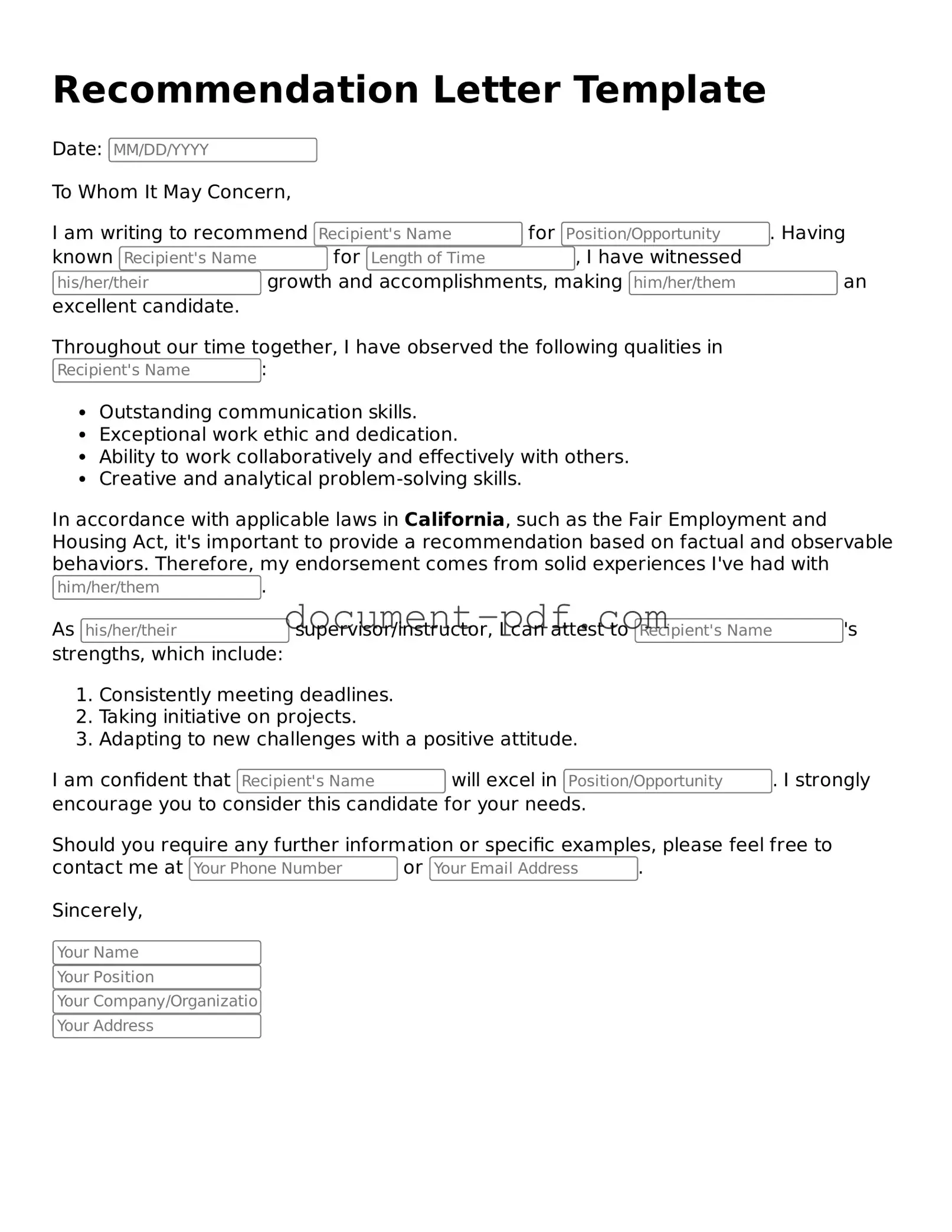A reference letter is similar to a recommendation letter in that it provides a personal endorsement of an individual’s skills and character. Typically written by someone who knows the person well, a reference letter highlights specific attributes and experiences that make the individual a strong candidate for a job or educational opportunity. Both documents aim to bolster the applicant's profile by providing insights from a credible source.
An academic reference letter serves a similar purpose, particularly in educational contexts. Written by a teacher or professor, it emphasizes a student's academic achievements and potential for success in further studies. Like a recommendation letter, it offers a personalized perspective on the candidate, often detailing specific projects or contributions that showcase their abilities.
A letter of support is another document that shares similarities with a recommendation letter. This type of letter is often used in grant applications or community initiatives, where the writer advocates for an individual or organization. Both documents aim to persuade the reader of the subject's qualifications and worthiness, employing specific examples to strengthen the case.
A character reference letter focuses on an individual's personal qualities rather than professional skills. Often written by friends or community leaders, it highlights traits such as integrity, reliability, and kindness. While a recommendation letter may concentrate on professional achievements, a character reference provides a more holistic view of the individual, demonstrating their values and moral character.
A performance appraisal document shares some similarities with a recommendation letter, particularly in a workplace context. This type of document evaluates an employee's job performance, often including feedback on strengths and areas for improvement. Both documents serve to provide an assessment of an individual's capabilities, though performance appraisals are typically more formal and structured.
A nomination letter is akin to a recommendation letter, especially in competitive selection processes. This document is written to support an individual's candidacy for an award, position, or honor. Like a recommendation letter, it outlines the nominee's qualifications and achievements, aiming to persuade the decision-makers of their merit.
Understanding the significance of a Power of Attorney document for financial and healthcare decisions can be crucial for future planning. This legal form enables individuals to designate another person to act on their behalf, ensuring that important decisions can be made in their absence.
A testimonial letter is another document that parallels a recommendation letter. This type of letter is often used in marketing or promotional materials, where a satisfied client or customer shares their positive experiences with a product or service. Both documents provide a personal endorsement, but testimonials are generally more informal and focused on specific experiences.
An endorsement letter is similar in nature to a recommendation letter, often used in political or professional contexts. This document expresses support for a candidate or initiative, highlighting the endorser's belief in the subject's abilities or policies. Both types of letters aim to influence the audience's perception by leveraging the credibility of the writer.
A personal statement, while not a letter, shares some characteristics with a recommendation letter. It is often required in college or job applications and provides insight into the individual’s motivations, experiences, and goals. Both documents allow the candidate to present themselves in a favorable light, though a personal statement is self-authored, whereas a recommendation letter is written by someone else.
Finally, a cover letter can be viewed as a document similar to a recommendation letter, particularly in job applications. A cover letter accompanies a resume and provides a narrative about the applicant's qualifications and interest in the position. Both documents aim to make a compelling case for the individual, though the cover letter is more focused on the job at hand, while a recommendation letter speaks to the individual's overall capabilities.
